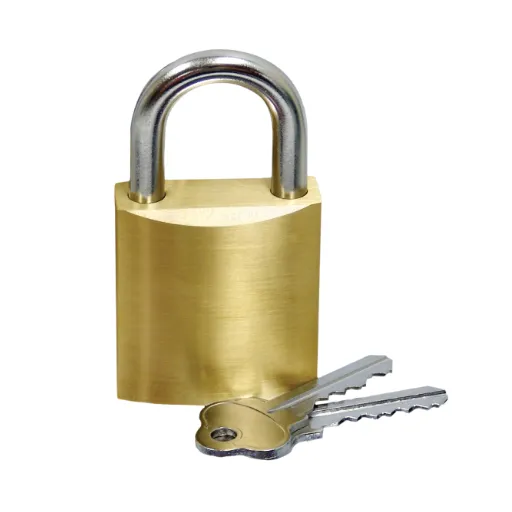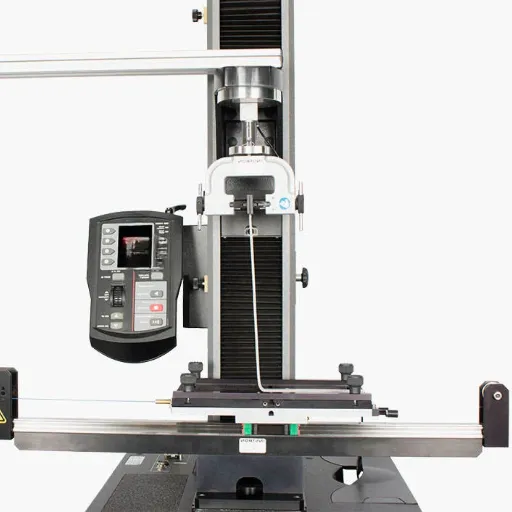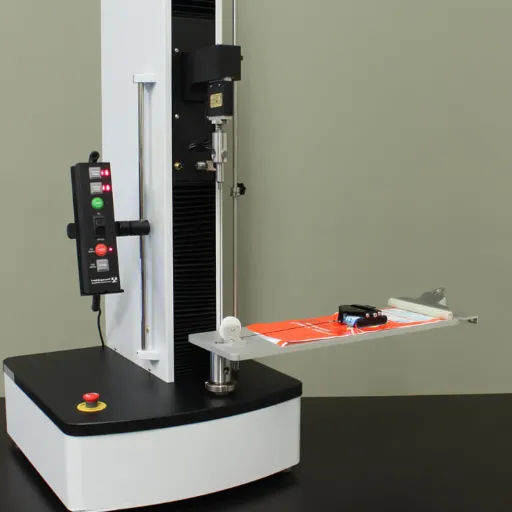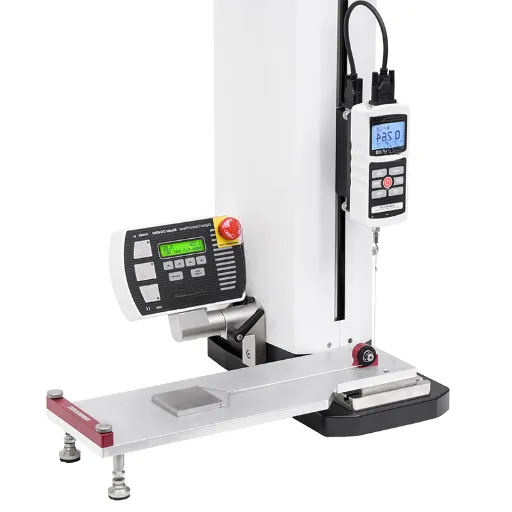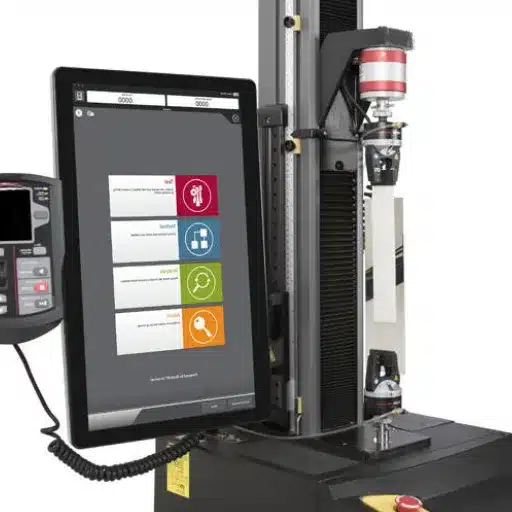No padlock offers equal security to your belongings. ASTM F883 is a very important benchmark for padlock performance, durability, and security and is referenced by manufacturers and consumers alike. Knowing the difference between high-performance padlock products can make all the difference for securing a storage unit, the gate, or expensive equipment. This article covers the BASIC information about ASTM F883, explains its importance, dates the test criteria, and relates how it ensures padlocks are meeting industry standards. At the end of this guide, you will have an insight that will prepare you in making a better choice to suit your security needs.
Understanding ASTM F883
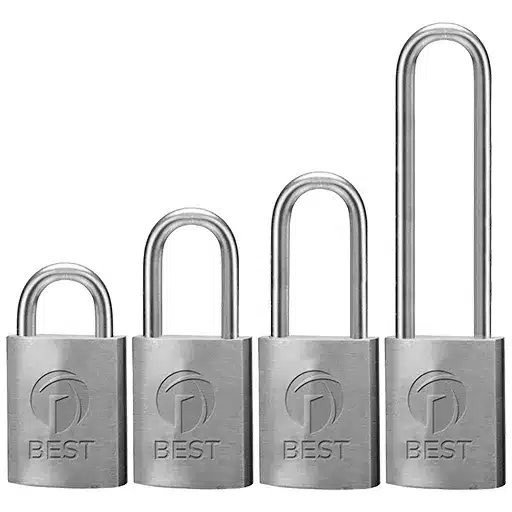
Definition of ASTM F883
ASTM F883 is a highly regarded standard emanating from ASTM International for testing and performance criteria of padlocks. The context under this standard, padlocks should demonstrate varying extents of functionality, reliability, and security across applications. Some of the tests cover resistance cut, lift, pry, or impact where pads are subjected during utilization.
The ASTM F883 is relevant in retaining a uniform set of criteria in measuring padlock manufacturing and testing. If a manufacturer produces and tests will under this standard, their products will be regarded by the industry, whereas any consumer can rest assured from the locks’ security and longevity. ASTM F883 unequivocally distinguishes between products that claim to meet rigorous levels of security and those that may be considered somewhat inferior, thus giving an unwavering recommendation as to which padlocks may be trusted.
ASTM F883 testing involves stringent procedures to assess the integrity of the lock under real-life conditions. The locks are tested for the application of force, durability, and other stresses to determine their strength and durability. These tests are a litmus for the performance of a padlock and ensure conformity to industry standards against tampering and unauthorized access. Hence must be used as an essential reference in the quest for better security solutions by both manufacturers and consumers.
Purpose of the Standard Performance Specification
ASTM F883 Standard Performance Specification is meant to outline and specify clear, objective criteria for grading the quality of a padlock and its security against physical attack. It establishes performance standards that are designed to test the ability of the padlocks to resist various forms of physical stress, such as cutting, pulling, and impacts, under controlled test conditions. Manufactures adhering to ASTM F883 can ensure that their padlocks meet universal requirements in terms of performance and reliability.
The ASTM F883 provides an important criterion for manufacturers and consumers alike in order to create transparency and trust with regard to padlock performance. It gives manufacturers feedback that they can use in trying to refine their product designs to better resist tampering and forced entry. For consumers, it is a form of assurance that the padlocks used to secure their belongings have gone through stringent testing according to industry standards.
Additionally, these performance specifications for American-Dynamics locksets are designed for contemporary needs and therefore serve as an alignment basis across use areas, ranging from residential to commercial applications. In doing so, by standardizing the evaluation procedure with ASTM F883, the risk of the rearing of sub-par products in the marketplace is diminished, while simultaneously promoting a global culture of innovation and enhancing safety solutions. Combining security with somewhat enhanced reliability and standardization makes ASTM F883 a mean feature in the security field.
Significance of ASTM F883 in Product Safety
ASTM F883 brings paramount safety in the production of padlocks and the like. This standard sets the rules and regulations by which the mechanical and operational performances of such products must be judged, ensuring that they comply with certain safety criteria. Consequently, the manufacturers are able to mass-produce reliable locking mechanisms that can resist common threats, such as physical tampering or wear in environmental exposure, thereby helping engender consumer confidence in these products.
Reducing variability among products is also another goody that the standard ensures, with all sides benefitting from enhanced consistency and reliability in the marketplace. By standardizing test methods and performance criteria for padlocks, lock manufacturers are assured by ASTM F883 elimination of sub-standard products from circulation. This provides a measure of protection to the consumer and levels the playing field for competition amongst manufacturers in a way that permits & stimulates such manufacturers to innovate whilst abiding by strict safety standards.
Further, ASTM F883 functions greatly in cultivating the wider culture of safety and quality in security. Thus, ASTM F883 implementation aligns safety practices globally to guarantee that security devices meet a high level of performance, irrespective of where or in what country they are manufactured or sold. This alignment becomes very critical for maintaining a global marketplace receivable by consumers with spellbound reliability in the products that are laid down by ranked standards.
Applications of ASTM F883 Across Industries
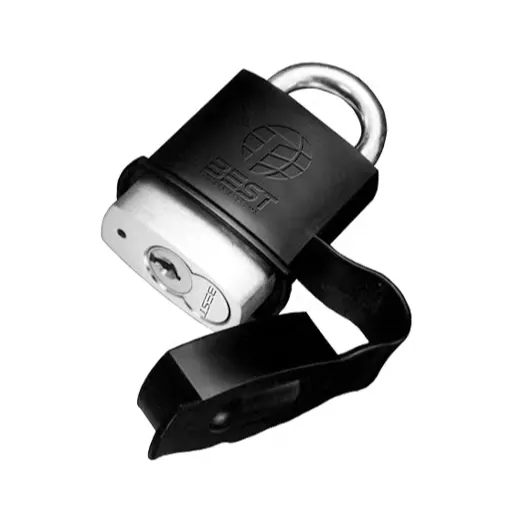
Impact on Manufacturing Processes
Implementing ASTM F883 specification deeply affects manufacturing processes; there coursing clear methods for the manufacture of security devices, thereby ensuring that each takes the grade of its own in consistency, with respect to quality and reliability. The manufacturers, thus, are forced to implement these into the selection of materials, design, testing, etc., so that there may be uniformity in world markets. Consequently, each product manufactured must satisfy criteria of the utmost safety and performance regardless of location of manufacture.
ASTM F883 standards pave the way for manufacturers to seek efficiency in production techniques, thereby minimizing errors. The standard allows for a proper regime to be formed for the testing of materials as well as assembly procedures, such that from within these tests, manufacturers can identify any weaknesses in the very beginning and correct them before these weaknesses could reach the market. This mitigates risks of product recalls, thereby increasing consumer confidence, bettering the marketability of the brands, and establishing high consumer loyalty.
An additional sore point in ASTM F883 is that it encourages innovations, i.e., promoters for the manufacturers to develop new techniques and technologies to conform with these standards. The set of guidelines draws investment toward research and development in the hope of gaining a particular durable, secure, and efficient product. This is, indeed, for the benefit of the manufacturers and the consumers from all over the world who need security devices that can guarantee the best protection and worth for the long term.
Role in Construction and Security Solutions
The ASTM F883 is one of the key standards for padlocks used in construction and security solutions. The standards make sure padlocks meet certain performance and durability requirements capable of withstanding various threat scenarios, such as tampering or forced entry. By setting forth clear guidelines, ASTM F883 supports the development of reliable and secure locking solutions used to secure residential, commercial, and industrial properties.
Compatibility of ASTM F883 with the construction security field augments product uniformity or performance, irrespective of the manufacturer. Architects- as well as contractors and security professionals- therefore can invest in padlocks that meet an internationally recognized quality standard via ASTM. Meanwhile, in essence, this also helps build consumer trust in these products that are put to test for purported strength, in corrosion resistance, and in their operation under any working condition.
Further, ASTM F883 encourages innovation in the security industry wherein manufacturers strive to improve their designs to meet and even exceed the requirements of the standard.
Consumer Goods: Ensuring Quality and Safety
ASTM F883 plays the all-important role in ensuring quality, safety, and security of its padlocks, a very commonly used security device in the consumer goods trade. The standard prescribes clear and measurable requirements for the construction, performance, and durability of padlocks. Hence, by adhering to this code, products manufactured by producers meet their expectations for rigorous safety, thus creating trust in consumers for these security solutions that they use in everyday life itself.
The standard prescribes methods of testing pads for strength and resistance to possible threats by way of physical attack, picking, or cutting. Strength testing is paramount to a real-life scenario that the padlock would be confronted with. In short, to the consumer, ASTM F883 ensures a higher expectation in protecting such priceless possessions, whether for personal belongings in the house or the protection of equipment in an industrial setting.
In the first place, ASTM F883 fosters enhanced manufacturing processes by promoting invention and consistency in padlock design. While this standard sees to the consumers to have products that are reliable and durable, it also wards off possible inadequacies. By producing padlocks in accordance with ASTM F883, manufacturers help create safer environments for people and communities alike.
Recent Updates and Developments in ASTM F883
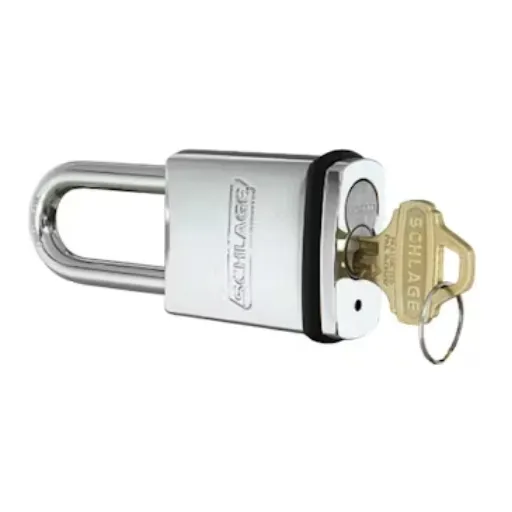
Changes in Guidelines and Testing Protocols
Recent amendments to ASTM F883 have revised the standards to include an even higher level of security and durability that should be ensured in the manufacture of padlocks. A major amendment has thus enhanced testing for resistance to physical attack on the padlocks, including cutting, pulling, and tampering. The tests now follow more stringent criteria for assessment, thus assisting the identification of any shortcomings and placing the bar of performance even higher on the products.
Another Important Evolution is the inclusion of updated requirements dealing with materials in the construction of padlocks so that improved resistance to corrosion and improved durability can be guaranteed by the choice of materials. It is meant to improve the life of the padlock, particularly against outdoor and industrial uses where it is subjected to severe conditions. The protocols emphasize the importance of sustainable materials without any compromise on strength and reliability.
Further, manufacturers are required to go through more detailed documentation according to the revised standard. It guarantees more transparency relating to fulfillment of ASTM F883 requirements and lays down clear directives for quality assurance processes. These updates were put in place to enhance consumer confidence, provide better protection, and promote consistency and innovation within the industry.
Padlock Testing Enhancements
The modernization introduced padlock testing procedures to give real security and durability assurances. They now simulate real-life scenarios, such as being subjected to high and low temperatures or soaking humidity, as well as physical abuse. This ensures that regular padlocks will work well for consumers in any environment and cannot be conceived as strong contenders for use in a residence subjected to climate changes or usages.
Another big upgrade are the more challenging impact and corrosion resistance tests. These tests examine how well the lock will resist severe impacts and prolonged exposure to rust-causing environments. By working on these weak spots, manufacturers can make locks that are tough and long-lasting. The changes are an aspect of the wider set of initiatives to modernize testing standards as per the demands of ever-changing security requirements.
Lastly, these revised guidelines emphasize clear testing protocols to create consistent results and allow for greater accountability. More transparency is thus offered in production so that from product to product, each leaving the factory meets the highest standards of quality. Consumers, in turn, can trust that every padlock was thoroughly tested against the rigorous ASTM F883 standards.
Salt Spray and UV Testing Protocols
Salt spray testing and UV exposure are vital factors under the ASTM F883 standards that confer the strength and performance to padlocks in inclement weather. Salt spray testing, considered a corrosive medium, measures the ability of the lock to resist rust and disintegration. It is a vital testing for products exposed to marine or industrial environments. The locks should withstand the conditions of ASTM F883 standards for long hours without losing either their function or integrity.
UV testing, by way of contrast, simulates the effects caused by prolonged exposure to ultraviolet radiation. With padlocks intended for outdoor use, extended exposure to direct sunlight is an extremely common occurrence. The UV test serves to confirm that materials used in locks do not degrade, lose strength, or even lose their effectiveness in terms of application after being subjected to heavy doses of UV radiation. This test criterion ensures those locks maintain strength and reliability while facing extreme weather conditions.
Salt spray and UV testing altogether check for the maximum durability of padlocks meant for variating environments. When a padlock is certified by ASTM F883, the consumers are assured of the capability of the padlock to perform consistently in severe conditions. The above test methods not only guarantee that the lifespan of the product is extended but also build a strong assurance toward its security and quality.
Impact of ASTM F883 on Product Performance
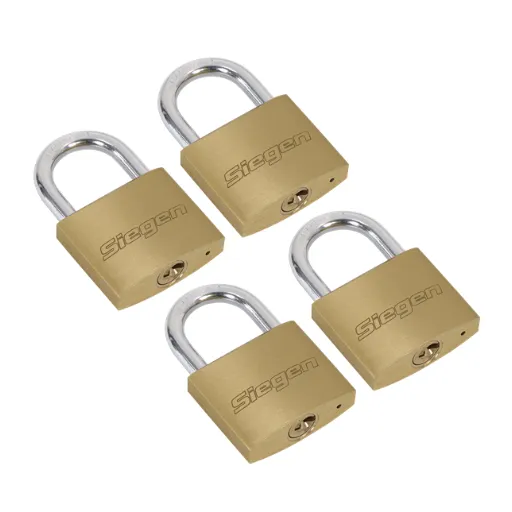
Improving Overall Product Reliability
ASTM F883 works successfully toward reliability of products that defer by way of setting exact and comprehensive requirements for padlocks for personal and industrial use. These standards ensure that the product is fit for performance, safety, and durability. Following ASTM F883, manufacturers produce padlocks that resist tampering and corrosion against inhospitable weather conditions, thus ensuring consistent performance reliability onto the end-user.
Another great reason for improving reliability is the emphasis placed on mechanical strength and resistance testing by the standard. ASTM F883 involves tests for impact resistance, shackle strength, and key function under prolonged use. By subjecting a product to these rigorous tests, manufacturers can easily pinpoint potential failure modes in its design or construction and correct them before the product goes into the market. This ensures that padlocks will last longer and be more secure possibilities, thus reducing the chances of failure and increasing consumer confidence.
Also, ASTM F883 enhances innovation of the industry by encouraging manufacturers to use advanced materials and engineering methods to meet or exceed the standard requirements. This stimulates a continuous evolution in product design, yielding padlocks that fulfill security expectations yet are adaptable to changes in consumer needs. Thus, Worksheet ASTM F883 forces manufacturers to increase the reliability of their products that users can both equally depend upon under all circumstances.
Supporting Business Operations and Excellence
ASTM F883 is instrumental in supporting business activities by ensuring the standardization of padlock security and performance evaluation. Following these standards would ensure that manufacturers maintain uniformity in their quality, furthering a consumer’s perception of the brand and ultimately satisfying the consumer. This uniformity would reduce occurrence of product failures, thereby providing reliability and minimizing complaints from consumers, all contributing to efficient business ventures.
This standard creates an innovative atmosphere within the industry by providing a clear criterion of what is meant by padlock performance. These benchmarks thus force manufacturers to go beyond the limits of their design and apply newer materials and techniques. By constantly implementing these standards, a business will become competitive in the markets and will also address changing needs of consumers and security threats over time.
These standards thus streamline businesses’ operations while minimizing the risks of regulatory compliance. Conforming to the standards, thereby complying with laws and safety requirements, saves companies from fines or recalls. Of course, such synergy leads the company toward operational excellence, along with fouling on some degree of professional reputation for itself as a worthy and sincere manufacturer committed to quality and safety.
Long-term Benefits for Companies
When a company goes the ASTM F883 path by conforming to it for its padlocks and locking devices, it builds a strong framework for quality and safety evaluation. The public has always had a healthy respect for such awareness promoting reputed reliable, secure products in accordance with the standards supremely recognized by the profession. In course of time serving trust helps to create stronger customer loyalty and good name of the product, both of which are imperative for sustenance of business in the long-run.
On another level, ASTM F883 compliance also enhances marketability of a company’s products, thus raising the market value of the entire company. Contents that are required by many industries to conform to standardized specifications, by conforming to them here, are able to enter markets where safety and performance are absolute prerequisities. The benefit derived here allows businesses to stay afloat and ride the crests of opportunity in local and foreign markets.
In addition, following the ASTM F883 standards can reduce the risks involved in the processes. Since these are accepted safety standards, adopting these standards would minimize the probability of production errors, accidents, or product recalls, all of which add enormous costs to the expenses and can damage the image of the firm. Continuous long-term standards adherence provides compliance but also delivery of efficient results and reduced costs while maintaining quality and safety aspects in product design and manufacturing.
Benefits of Adhering to ASTM F883 Standards
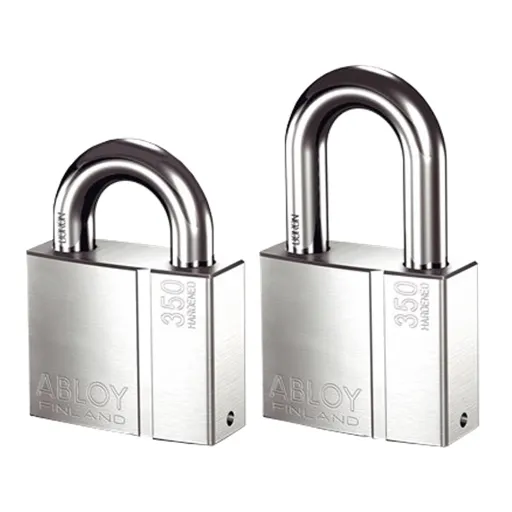
Improving Product Safety and Quality
Correct adherence to ASTM F883 enhances product safety and quality by setting comprehensive guidelines for padlocks. These standards establish the performance requirements for matters of strength, durability, or security measures that guarantee compliance on a consistent basis. Therefore, for manufacturers, meeting these specifications means that their padlocks are safe for consumer use and the product can legitimately resist hazards or misuse.
ASTM F883 compliance means testing under different conditions that is designed to guarantee that the products perform well. Among other things, these tests check the level of resistance the padlocks have to impacts, corrosion, or tampering. Alongside assuring the consumers about the products’ reliability, manufacturers join good manufacturers who care about providing top-notch and secure solutions that turn customers’ trust into brand loyalty with time.
Furthermore, these specifications also ensure that the manufacturers meet the regulatory expectations while simultaneously minimizing risks, such as product failure or product liability cases that may arise. Streamlining the design and making process, as well as the likelihood of product recall or safety concern, increases confidence in product manufacturing. ASTM F883 still protects consumers while making the manufacturer successful by exercising best practices in manufacturing safe and durable padlocks.
Building Consumer Trust Through Compliance
Building consumer trust through compliance with ASTM F883 means adhering to safety, quality, and durability standards for padlocks. ASTM F883 specifies how padlocks should perform, what they should be made of, and what are their functional specifications. By ensuring compliance with these standards, manufacturers convey to consumers their intent to manufacture safe and reliable products that meet consumer expectations.
With direct influence on consumer confidence, compliance with ASTM F883 reduces incidences of product failures or security concerns. A padlock that is designed and manufactured according to the requirements of the standard provides assurance to the user that it has been tested rigorously and meets quality standards for security. This assurance fosters a stronger connection between the manufacturers and their customers by developing trust in the brand and its products.
Moreover, following ASTM F883 assists in maintaining the reputation of a company and sustaining the business for the long run. The standard complies with regulatory requirements and simultaneously ensures a level playing field for entities in the market. Customers mostly go for products that are certified for recognized standards, as they see this certification as a testament to greater reliability and safety. Hence, for manufacturers, being compliant is also a good means through which they build credibility and loyalty amongst their consumers.
Reducing Liability Risks and Supporting Regulatory Alignment
The ASTM F883 standard greatly helps manufacturers reduce liability risks by ensuring that padlocks comply with stringent safety and performance criteria. ASTM F883 serves as a clear metric of product reliability, which companies can utilize to lessen risk exposures arising from product failure, in turn, causing accidents and damages to property. By complying with this standard, manufacturers demonstrate due diligence concerning user safety, which may stand out well as their defense in civil liability claims.
Thereby, ASTM F883 permits regulatory alignment among industries by providing for one standard for design and functionality of padlocks, which levels the space in which companies operate. This alignment makes it easier to adhere to the regulations and ensures that products satisfy the federal as well as the state requirements. Having such a recognized standard like ASTM F883 or another standard increases the trust of the regulators and convinces them that safety and quality have been maintained by manufacturers as per established guidelines.
For businesses, the requirement to meet ASTM F883 standards plays a crucial role in building credibility while also instilling consumer confidence. Products that carry the mark of ASTM F883 certification are generally viewed to be of superior quality and safer; hence, they bear greater acceptance in the market. This not only boosts the image of the company but also fosters the support towards growth in the longer run by preventing noncompliance with expected standards of safety and aligning its products with international safety norms.
Frequently Asked Questions (FAQ)
-
Q: What is ASTM F883?
A: ASTM F883 is a standard performance specification for padlocks governed by criteria and tests to evaluate their security and durability. It has been brought forth as the standard by which padlocks are used by various bodies, including the Department of Defense.
Q: What are some of the features of the ASTM F883 standard?
A: The ASTM F883 standard provides specifications for padlocks that are uniquely made, describes various grades of performance, and prescribes operational and environmental tests to assist users in choosing padlocks that meet their security requirements.
Q: What tests are included under ASTM F883?
A: It covers test methods like forcing tests, surreptitious entry, operational, and environmental tests that try to replicate, in laboratory conditions, the actual scenario and check how padlocks fare and resist such attempts under real-world environments.
Q: How does ASTM F883 help users select suitable padlocks?
A: This specification provides users with a complete listing of tests for the purpose of achieving quality assurance in padlocks, including considerations of performance grades and safety. Thus, the users are able to select padlocks that meet their requirements for both security and operational needs.
Q: Who created the ASTM F883 specification?
A: ASTM F883 is produced under ASTM International, an organization involved in the development of international standards. The standard had safety and performance requirements concerning padlocks, especially those used by the Department of Defense and other agencies.
Q: How does ASTM F883 address environmental issues?
A: The specification includes environmental tests affecting a padlock’s performance in different conditions, for instance, temperature-related or humidity-related loads. This test ensures that the padlocks do actually withstand environmental stresses while maintaining functionality for security.
Q: What is it that users are charged with when dealing with ASTM F883-compliant padlocks?
A: They must select padlocks of safety and performance that conform to the ASTM F883 standards. Users shall guarantee that the lock they are using suits a given application and can resist attack.
Q: Can special kinds of attributes be put into the standard ASTM F883 padlocks?
A: ASTM F883 does provide for the evaluation, selection, and acceptance test standards for specially manufactured padlocks with atypical features or attributes. This gives the user the potential to choose a padlock that best suits his specialized security requirements.
Q: Is ASTM recognized by international bodies?
A: Yes, ASTM F883 functions as a de facto internationally accepted standard and recognized by various bodies and industries across the world, processes to maintain global security and performance standards for padlocks as manufactured and tested under this standard.
Q: What should users take into account when selecting padlocks based on ASTM F883?
A: In determining their selection, users should take into account the levels of performance described in the ASTM F883 standards, the results of the tests performed, and the individual’s particular security requirements and any environmental conditions which may affect the state of maintenance of the padlocks.
References
- F883 Standard Performance Specification for Padlocks – ASTM
This official ASTM page provides details on the environmental, functional, operational, and security requirements for padlocks. - ASTM F883 – Wikipedia
An overview of ASTM F883, including its purpose and scope as a standard for padlocks. - ASTM-F883 PADLOCKS – EverySpec
Contains specifications and requirements for padlocks under ASTM F883.

